Sihao Cheng 程思浩
I am a senior postdoc fellow at the Perimeter Institute and visiting fellow at Institute for Advanced Study. I got my Ph.D. in astrophysics in 2021 at Johns Hopkins University. Beyond science, I like classical music, kendo, and some anime.
Research
===========================
I am interested in using statistical analysis of survey data to reveal beautiful physics and make discoveries. In this data-rich era, we are limited less by the size of data but more by the ideas to explore it. My innovative analyses have led to several discoveries and impactful contributions across cosmic scales, including
- cosmological applications of a new statistic that borrows ideas from deep learning;
- discovery of freezing stars that shine out of gravitational sedimentation;
- the best measurement of white dwarf merger rate using kinematic age;
- discovery of a “Jupiter” candidate that opens a unique window to study exoplanets around massive stars;
- discovery of a dwarf planet candidate in an extremely wide orbit around the Sun.
I am also working on
- a much better (clear and unbiased) map of the Milky Way phase space using Gaia data and advanced mapping techniques and
- a search for Planet X, a hypothesized new planet in our solar system.
Far-away dwarf planet in our Solar system
While searching for Planet X/Planet 9, I found an extreme “cousin” of Pluto, designated as 2017 OF201. It is likely large enough to qualify as a dwarf planet, and its orbit is extremely wide that it should come from the inner Oort cloud, a remote region in the solar system we still know little about. It also has interesting implications to the Planet 9 hypothesis. Here is our paper. Press release and media coverage can be found here: IAS, Princeton University, Sky & Telescope, The New York Times, Reuters, Der Spiegel, NBC News, and others.


Are there planets around massive stars?
Despite the success in finding more than 5000 extra-solar planets, traditional methods face challenges in finding planets around stars over 3 Msun. I work on a new method by searching around massive white dwarfs – the remnants of massive stars. In Spitzer archival data, I identified a 4-Jupiter-mass planet candidate, and I am the PI of a JWST Cycle 3 program for its spectroscopic follow-up. This technique opens a unique window to study planets around massive stars. Interestingly, as shown in the figure above, these giant planets (Jupiter-sized) are even larger than the host stars (Earth-sized) because the hosts are white dwarfs!
How to quantify random fields or textures?
Extracting information from stochastic fields is a ubiquitous task in science. However, from cosmology to biology, it tends to be done either through a power spectrum analysis, which is often too limited, or the use of convolutional neural networks, which requires large training sets and lack interpretability. I showed that a new powerful tool called the scattering transform stands nicely between the two extremes. I studied in depth how to intuitively understand this new statistic which is unfamiliar to most physicists, and used cosmology as an example where its performance is on a par with neural networks while being well-structured statistics. My paper won an award of astrostatistics and was reported by this astrobites blog.
Recently, we successfully applied this new tool to real weak lensing data with expected improvement, and we argued that photo-z calibration rather than spatial statistic becomes the main limitation.
To advocate the use of the scattering transform, I wrote a publicly available module ST.py based on pytorch, which can implement 1D and 2D scattering transform in a fast and transparent way.
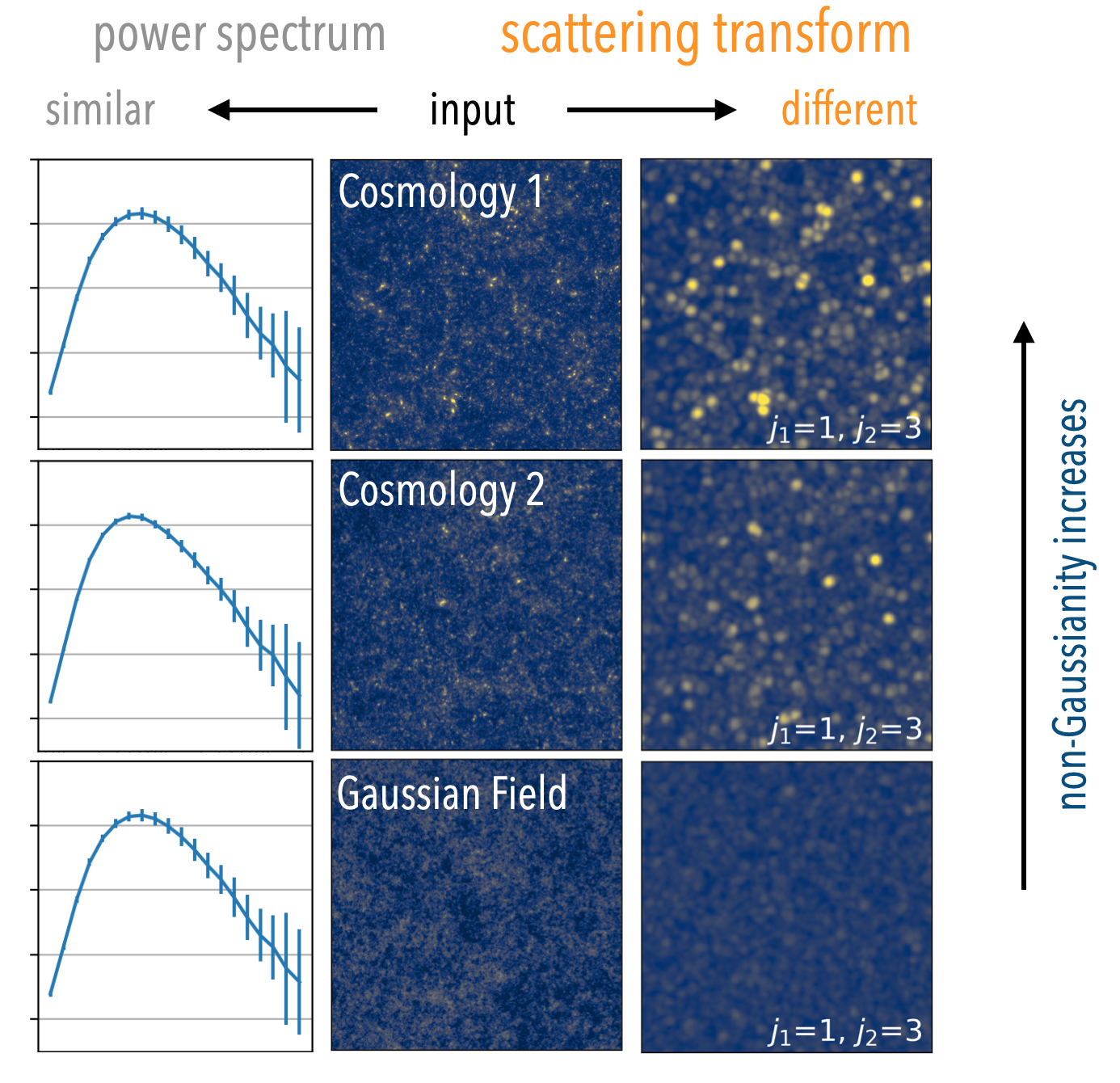
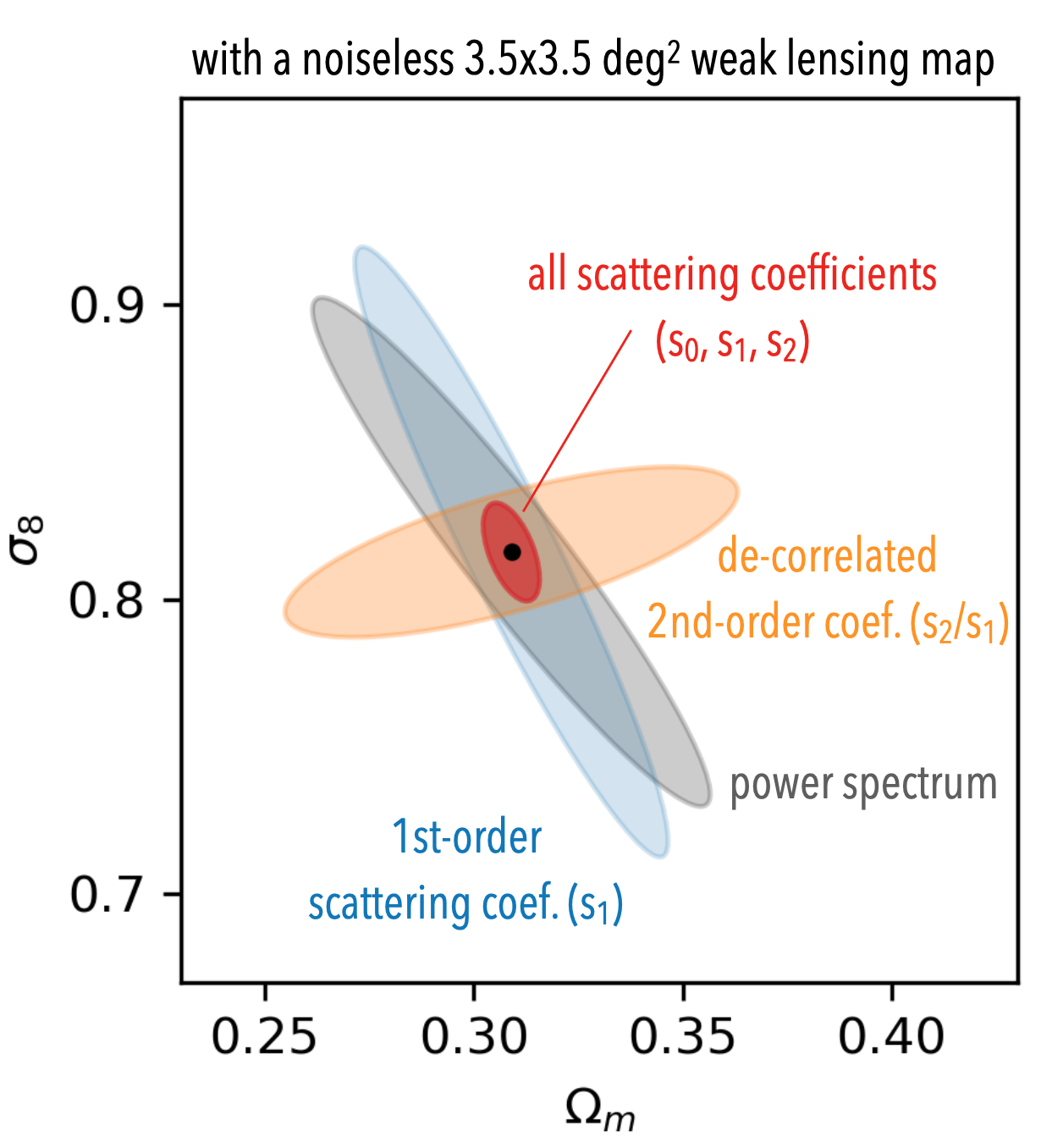
New physics in white dwarfs
I also work on white dwarfs, the destiny of most stars in the universe. Using data from the Gaia space mission, I discovered a new population of white dwarfs that cool extremely slowly and some others that are merger products. My work has led to two papers (click the figures below), one of which was highlighted by astrobites and AAS Nova and considered a major discovery in Gaia data. More recently, we explained the astounding physics behind it in a Nature paper, which is covered by Physics Today, elementy and many other media. I am very proud of this discovery!
To make white dwarf research easier, I also built a publically available package WD_models in python for transformation between white dwarf photometry and physical properties.
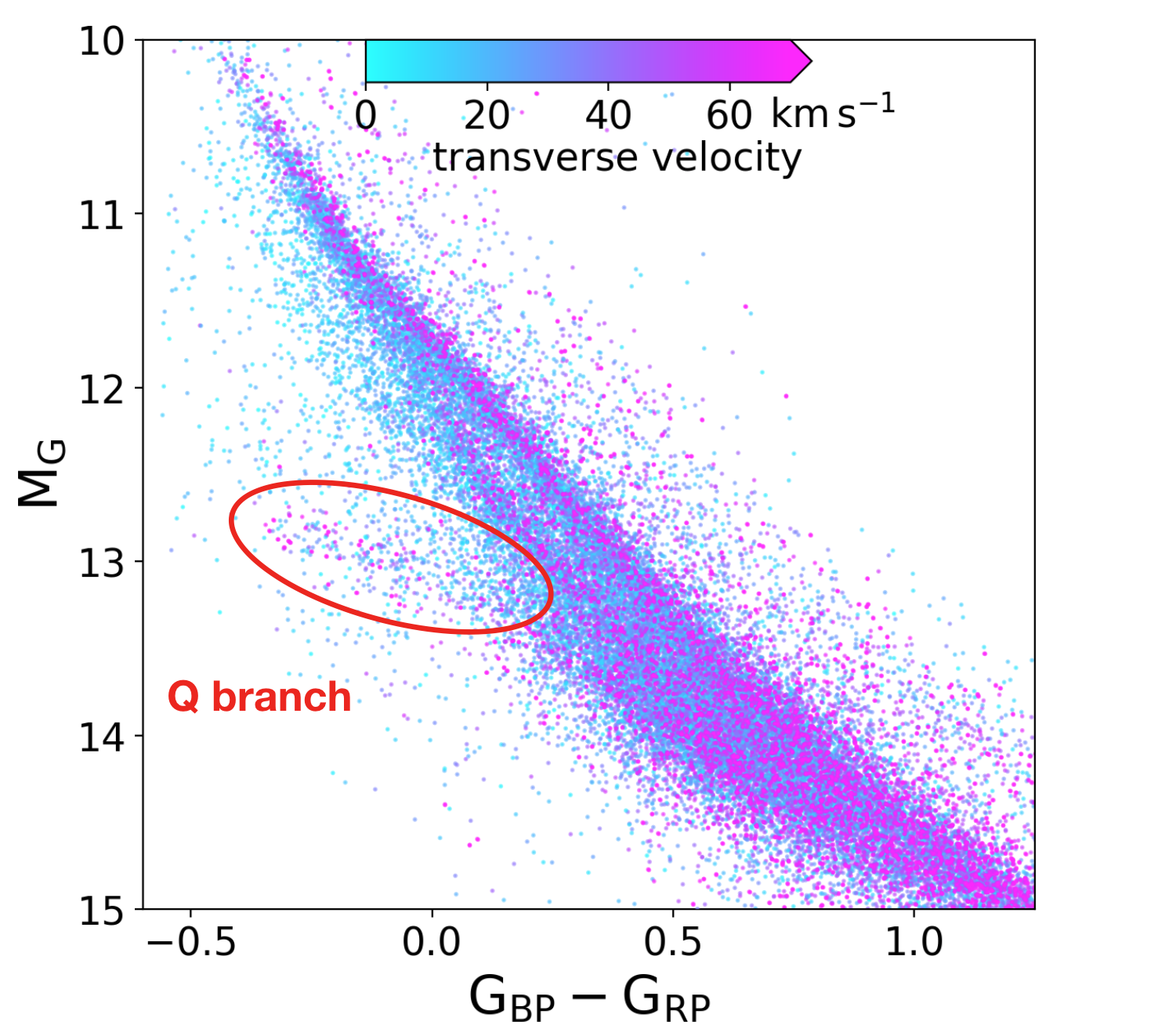
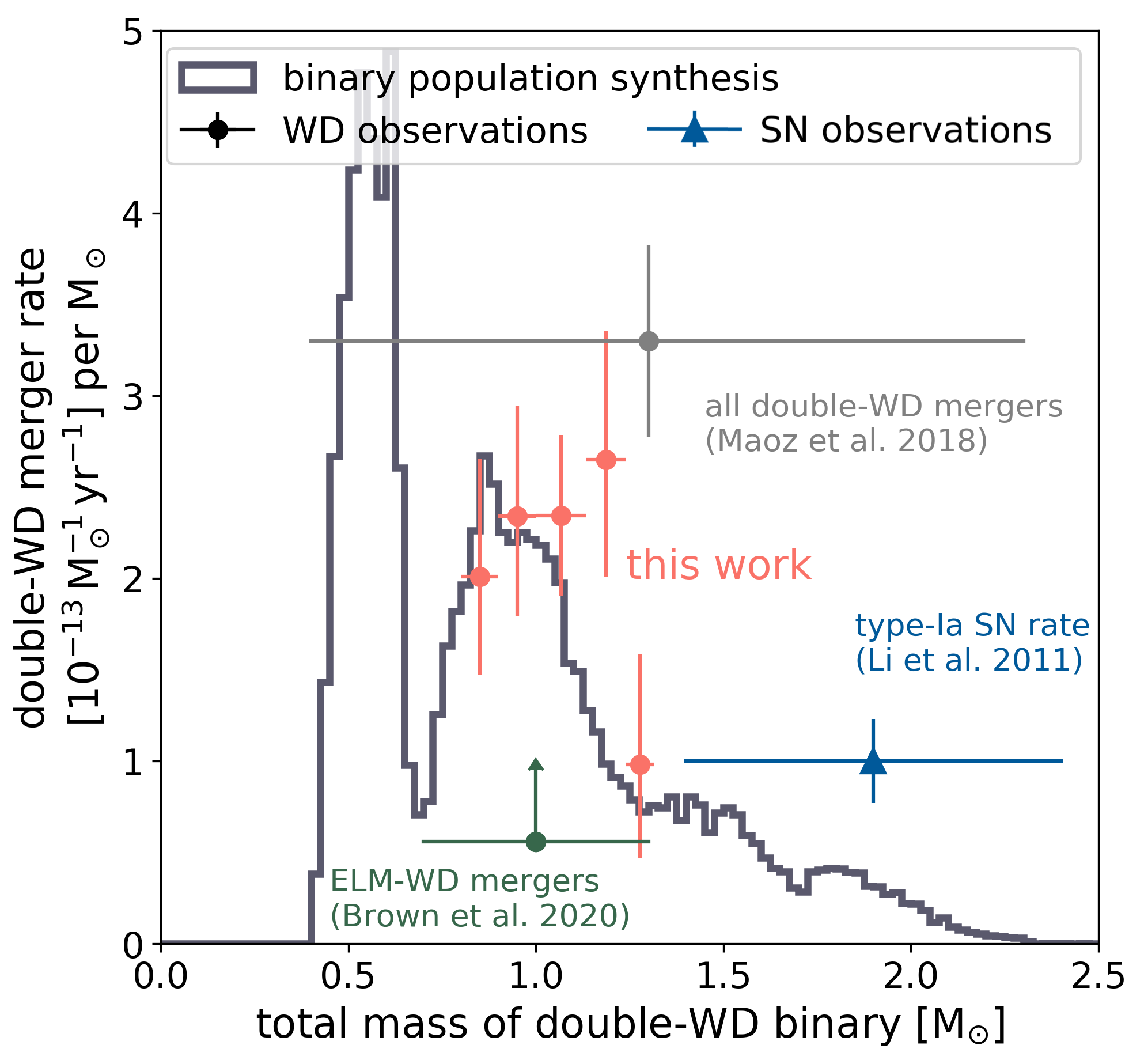
Spectra of meteors
In high school, my twin brother (who is studying philosophy now) and I found an efficient way to take spectra of meteors with digital camera. We designed a prism device that can screw in front of a lens. We ordered several from a factory, and sold them to other amateurs of astronomy. Shown below is one spectrum of the Geminid meteor shower, taken in 2010. We have made a new batch of such prism devices with a cost of less than 200 dollars each. If you are interested, please contact us or buy it here!
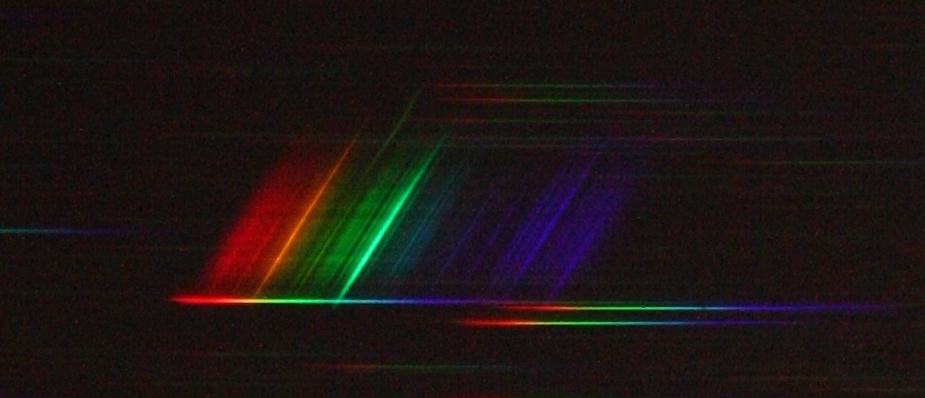

C.V.
Perimeter Institute
2025-, senior postdoc fellow
2022-2025, visiting fellow

Institute for Advanced Study
School of Natural Science, Astrophysics Group
2025-, visiting fellow
2022-2025, member

École Normale Supérieure, Paris
The Centre for Sciences of Data
2021-2022, visiting fellow
Advisor: Prof. Brice Ménard, Prof. Stéphane Mallat

Johns Hopkins University
Department of Physics and Astronomy
2021-2022, postdoc fellow
2017-2021, M.A., Ph.D. (Thesis)
Advisor: Prof. Brice Ménard

Peking University (北京大学)
Department of Astronomy
2012-2016, B.S.
Advisor: Prof. Eric Peng (彭逸西)

Publications
First author:
Cheng, S., Li, J. & Yang, E., Discovery of a dwarf planet candidate in an extremely wide orbit: 2017 OF201, 2025, arxiv:2505.15806
Cheng, S., Schlaufman, K. C., & Caiazzo, I., A Candidate Giant Planet Companion to the Massive, Young White Dwarf GALEX J071816.4+373139 Informs the Occurrence of Giant Planets Orbiting B Stars, 2024, AJ, 170, 47
Cheng, S., et al., Cosmological constraints from weak lensing scattering transform using HSC Y1 data, 2025, JCAP, 01, 006
Cheng, S., Morel, R., Allys, E., Ménard, B. & Mallat, S., Scattering Spectra for Physics, 2024, PNAS Nexus
Cheng, S. & Ménard, B., How to quantify fields and textures? A guide to the scattering transoform, 2021, arXiv:2112.01288
Cheng, S. & Ménard, B., Weak lensing scattering transform: dark energy and neutrino mass sensitivity, 2021, MNRAS, 507, 1012
Cheng, S., Ting, Y.-S., Ménard, B., & Bruna, J., A new approach to observational cosmology using the scattering transform, 2020, MNRAS, 499, 5902
Cheng, S., Cummings, J. D., Ménard, B., & Toonen, S., Double White Dwarf Merger Products among High-mass White Dwarfs, 2020, ApJ, 891, 160
Cheng, S., Two delays in white dwarf evolution revealed by Gaia, 2019, Proceedings of IAU, 15(S357), 175
Cheng, S., Cummings, J. D., Ménard, B., A Cooling Anomaly of High-mass White Dwarfs, 2019, ApJ, 886, 100
Cheng, S., Cheng, S., Meteor spectral observation with DSLR, normal lens and prism, 2011, JIMO, 39, 39
Important contribution:
Bédard, A., Blouin, S., Cheng, S., Buoyant crystals halt the cooling of white dwarf stars, 2024, Nature, (free access link)
Chandra, V., Hwang, H.-C., Zakamska, N. L., Cheng, S., A Gravitational Redshift Measurement of the White Dwarf Mass–Radius Relation, 2020, ApJ, 899, 146
Lu, C. X., Schlaufman, K. C., Cheng, S., An Increase in Small-planet Occurrence with Metallicity for Late-type Dwarf Stars in the Kepler Field and Its Implications for Planet Formation, 2020, AJ, 160, 253
Others:
Cowell, J. A., et al., First Constraints from Marked Angular Power Spectra with Subaru Hyper Suprime-Cam Survey First-Year Data, 2025, arxiv2507.12315
Çalışkan, M., Kumar, N. A., Kamionkowski, M., and Cheng, S., A Fog Over the Cosmological SGWB: Unresolved Massive Black Hole Binaries in the LISA Band, 2025, arxiv2506.18965
Novaes, C., et al., Cosmology from HSC Y1 Weak Lensing with Combined Higher-Order Statistics and Simulation-based Inference, 2025, PRD, 111, 083510
Grandón, D. et al., Impact of baryonic feedback on HSC Y1 weak lensing non-Gaussian statistics, 2024, PRD, 110, 103539
Liu, G., et al., A new code for low-resolution spectral identification of white dwarf binary candidates, 2024, A&A, 690, A29
Hwang, H.-C., Ting, Y.-S., Cheng, S., Speagle, J, Dynamical masses across the Hertzsprung-Russell diagram, 2024, MNRAS, 528, 4272
Marques, G. A. et al., Cosmology from weak lensing peaks and minima with Subaru Hyper Suprime-Cam survey first-year data, 2023, MNRAS, 528, 4513
Ren, L., et al., A Systematic Search for Short-period Close White Dwarf Binary Candidates Based on Gaia EDR3 Catalog and Zwicky Transient Facility Data, 2023, ApJS, 264, 39
Euclid Collaboration, et al., Euclid preparation-XXVIII. Forecasts for ten different higher-order weak lensing statistics, 2023, A&A, 675, A120
Liu, D. Z., et al., Potential scientific synergies in weak lensing studies between the CSST and Euclid space probes, 2023, A&A, 669, A128
Camisassa, M., et al., Forever young white dwarfs: when stellar ageing stops, 2021, A&A Letters, 649, 7
Bauer, E. B., Schwab, J., Bildsten, L., and Cheng, S., Multi-Gigayear White Dwarf Cooling Delays from Clustering-Enhanced Gravitational Sedimentation, 2020, ApJ, 902, 93
Marigo, P., Cummings, J. D., et al., Carbon star formation as seen through the non-monotonic initial–final mass relation, 2020, Nature Astronomy, full text here
Contacts
scheng@ias.edu
+1 443 207 1532
Bloomberg Hall 150
1 Einstein Dr, Institute for Advanced Study
Princeton, NJ08540, USA




